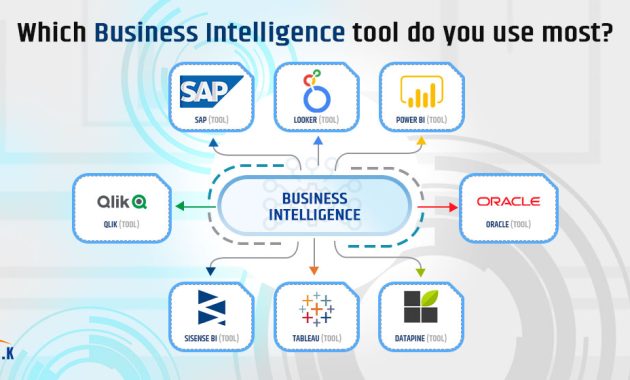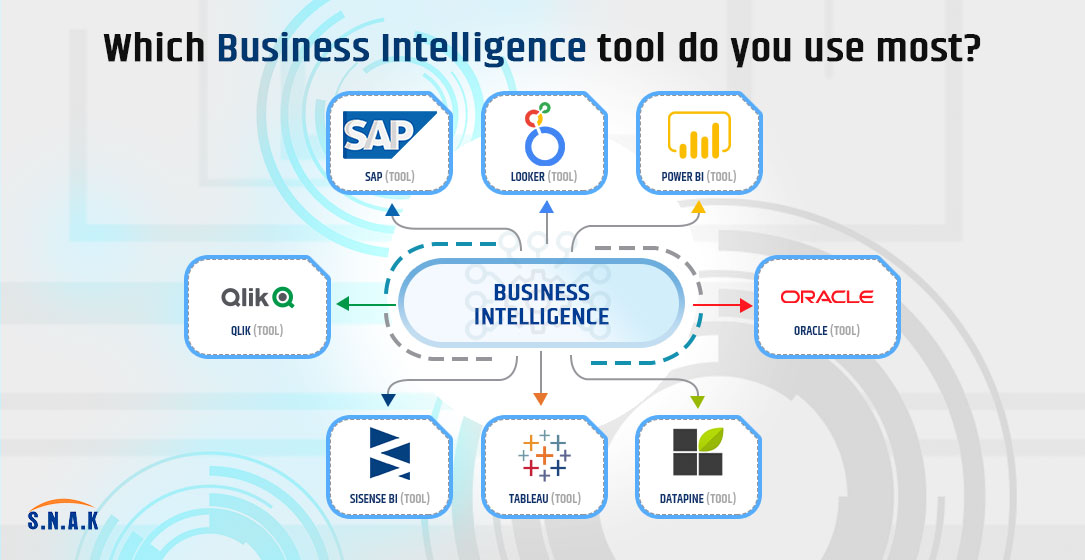
Beginner’s Guide to 7 Business Intelligence Tools Revealed: Your Path to Data-Driven Decisions
In today’s data-saturated world, making informed decisions is no longer a luxury, but a necessity. Businesses of all sizes are grappling with massive amounts of information, struggling to extract meaningful insights. This is where business intelligence (BI) tools come in. They act as the bridge between raw data and actionable knowledge, empowering organizations to understand trends, identify opportunities, and optimize performance. This beginner’s guide will delve into seven prominent business intelligence tools, providing a comprehensive overview to help you navigate this crucial landscape.
The power of business intelligence lies in its ability to transform complex data into easily digestible formats. From interactive dashboards to detailed reports, these tools provide a clear view of key performance indicators (KPIs), enabling data-driven decision-making. This guide is tailored specifically for beginners, offering a practical roadmap to understanding and implementing these essential tools.
Understanding the Fundamentals of Business Intelligence
Before diving into specific BI tools, it’s crucial to grasp the core concepts of business intelligence. At its heart, BI involves collecting, storing, analyzing, and interpreting data to support strategic and tactical decision-making. This process typically involves the following stages:
- Data Collection: Gathering data from various sources, such as databases, spreadsheets, and cloud applications.
- Data Storage: Organizing and storing data in a centralized repository, often a data warehouse.
- Data Analysis: Applying analytical techniques to uncover patterns, trends, and insights.
- Data Visualization: Presenting data in a visual format, such as charts and graphs, to facilitate understanding.
- Reporting and Interpretation: Creating reports and dashboards to communicate findings and support decision-making.
The goal of business intelligence is to provide businesses with a 360-degree view of their operations, enabling them to:
- Improve operational efficiency.
- Identify new revenue streams.
- Enhance customer satisfaction.
- Gain a competitive advantage.
Exploring Seven Essential Business Intelligence Tools
Now, let’s explore seven of the most popular and effective business intelligence tools available. Each tool offers unique features and functionalities, catering to different needs and budgets. This section will provide a brief overview of each, highlighting their key strengths.
Tableau
Tableau is a leading BI tool renowned for its intuitive interface and powerful data visualization capabilities. It allows users to connect to a wide range of data sources and create interactive dashboards with ease. Tableau is particularly well-suited for businesses that prioritize data exploration and visual storytelling. Its drag-and-drop interface makes it accessible to users of all skill levels. It offers a wide range of visualization options, allowing for the creation of compelling and informative dashboards. Tableau is suitable for both small businesses and large enterprises.
Microsoft Power BI
Microsoft Power BI is another popular BI tool, tightly integrated with the Microsoft ecosystem. It provides a comprehensive set of features for data analysis, visualization, and reporting. Power BI is known for its affordability and ease of use, making it a great option for businesses of all sizes. It integrates seamlessly with other Microsoft products, such as Excel and Azure. Power BI offers a free version with limited features, as well as paid versions with advanced capabilities. Its cloud-based nature allows for easy collaboration and sharing of reports.
Qlik Sense
Qlik Sense is a self-service BI tool that emphasizes data discovery and exploration. It uses an associative data model, allowing users to uncover hidden relationships within their data. Qlik Sense is known for its flexibility and its ability to handle complex data sets. It offers advanced analytical capabilities, including predictive analytics and data mining. Qlik Sense is designed to empower business users to analyze data independently, without relying on IT support. It provides a user-friendly interface and a wide range of visualization options.
Looker (Google Cloud)
Looker, now part of Google Cloud, is a BI tool that focuses on data modeling and governance. It allows businesses to create a single source of truth for their data, ensuring consistency and accuracy across all reports and dashboards. Looker is particularly well-suited for organizations with complex data structures and a need for robust data governance. It offers advanced data modeling capabilities, enabling users to define and manage data relationships. Looker integrates seamlessly with other Google Cloud services. It is a powerful tool for data-driven decision-making.
Sisense
Sisense is a BI tool designed for complex data analysis and embedded analytics. It allows businesses to embed interactive dashboards and reports directly into their applications and workflows. Sisense is known for its performance and scalability, making it suitable for handling large data sets. It offers advanced data modeling capabilities, as well as support for a wide range of data sources. Sisense is a good choice for businesses that want to provide their customers or employees with access to embedded analytics. It focuses on both data analysis and data presentation.
ThoughtSpot
ThoughtSpot is a BI tool that leverages natural language processing (NLP) to enable users to ask questions and get instant answers from their data. It’s like having a search engine for your data. ThoughtSpot is known for its ease of use and its ability to democratize data access. It allows business users to explore data without needing to learn complex query languages. ThoughtSpot is particularly well-suited for businesses that want to empower their employees to make data-driven decisions. Its intuitive interface makes it accessible to users of all skill levels.
Zoho Analytics
Zoho Analytics is a cloud-based BI tool that offers a comprehensive set of features for data analysis and reporting. It is part of the Zoho suite of business applications and integrates seamlessly with other Zoho products. Zoho Analytics is known for its affordability and its ease of use, making it a good option for small and medium-sized businesses. It offers a wide range of data connectors, as well as advanced analytical capabilities. Zoho Analytics provides a user-friendly interface and a wide range of visualization options. It is a cost-effective solution for data-driven decision-making.
Choosing the Right Business Intelligence Tool for Your Needs
Selecting the right business intelligence tool is a critical decision that can significantly impact your organization’s ability to leverage data. The best tool for you will depend on your specific needs, budget, and technical capabilities. Consider the following factors when making your decision:
- Data Sources: What data sources do you need to connect to? Ensure the tool supports those sources.
- Data Volume: How much data do you need to analyze? Some tools are better suited for handling large data sets.
- User Skill Level: How comfortable are your users with data analysis and visualization? Choose a tool that is easy to use.
- Budget: What is your budget for the tool, including licensing fees and implementation costs?
- Features: What specific features do you need, such as data modeling, advanced analytics, and embedded analytics?
It’s often helpful to start with a free trial or a proof-of-concept project to evaluate different BI tools before making a final decision. [See also: Comparing BI Tool Features: A Comprehensive Guide]
Implementing and Utilizing Business Intelligence Tools Effectively
Once you’ve selected a BI tool, the next step is to implement it effectively. This involves data integration, data modeling, and the creation of reports and dashboards. Here are some best practices:
- Data Integration: Connect to your data sources and ensure that data is properly extracted, transformed, and loaded (ETL) into the tool.
- Data Modeling: Define the relationships between your data and create a data model that supports your analysis needs.
- Dashboard Design: Design dashboards that are clear, concise, and visually appealing.
- Training and Adoption: Provide training to your users and encourage them to use the tool regularly.
- Continuous Improvement: Regularly review your dashboards and reports and make adjustments as needed.
By following these best practices, you can maximize the value of your BI tool and empower your organization to make data-driven decisions. [See also: Data Governance Best Practices for Business Intelligence]
The Future of Business Intelligence
The field of business intelligence is constantly evolving, with new technologies and trends emerging. Some of the key trends to watch include:
- Artificial Intelligence (AI) and Machine Learning (ML): AI and ML are being used to automate data analysis, identify patterns, and make predictions.
- Data Democratization: The trend of making data accessible to everyone in an organization, not just data scientists.
- Cloud-Based BI: The increasing adoption of cloud-based BI tools, which offer greater flexibility and scalability.
- Embedded Analytics: The trend of embedding analytics directly into applications and workflows.
By staying informed about these trends, you can ensure that your BI strategy remains relevant and effective. The future of business intelligence promises even greater insights and opportunities for data-driven decision-making. This guide serves as a solid foundation for your business intelligence journey.
Conclusion: Embracing Data-Driven Decision-Making
Choosing and utilizing the right business intelligence tools is a game-changer for any business. This beginner’s guide has explored seven powerful tools, providing a starting point for your data journey. Remember, the key to success lies in understanding your data needs, selecting the appropriate tools, and implementing them effectively. Embrace the power of data, and watch your business thrive.

